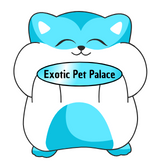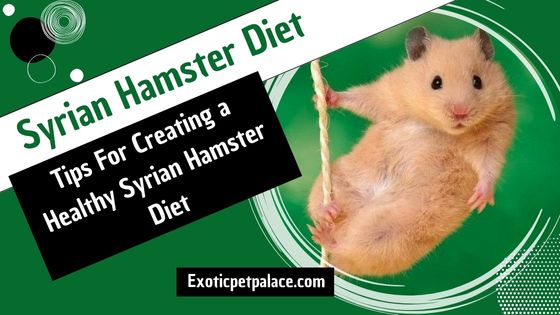For years, pet lovers have fallen in love with the charming Syrian hamster, which has fluffy cheeks and a curious action.
However, just like any other pet, keeping your Syrian hamster happy and healthy requires a well-balanced diet.
Understanding the Syrian hamster diet and dietary requirements is critical for maintaining your tiny friend’s health.
In this article, we will discuss in detail the Balanced Syrian Hamster Diet, its dietary needs, and the Difference between the Syrian Hamster Diet & Roborovski Hamster Diet.
So stay with me till the end.
Let’s start,
Also Read:
Roborovski Hamster Diet |Detailed Guide For Pet Owners|
Can Guinea Pigs Eat Hamster Food?
What Human Food Can a Hamster Eat?
Syrian Hamster Diet: Understanding Their Nutritional Needs
Syrian hamsters are omnivores, which means they consume a variety of plant and animal foods.
In the wild, they eat seeds, grains, fruits, vegetables, and the occasional bug.
As a good pet owner, it is your responsibility to provide this variety in their caged habitat.
A well-balanced Syrian hamster diet should consider the following:
- Protein:
Protein is essential for building and repairing tissues, as well as for overall growth and development.
Aim for a Syrian hamster diet with around 12% protein content.
- Fiber:
Fiber aids digestion and helps maintain a healthy gut.
A good Syrian hamster food will have a moderate amount of fiber (around 15%).
- Fats:
Healthy fats provide energy and support important bodily functions.
However, too much fat can lead to obesity.
A Syrian hamster diet should have a moderate fat content (around 6-8%).exclamation
- Vitamins and Minerals:
Just like humans, Syrian hamsters need essential vitamins and minerals for optimal health.
Look for a commercial food mix that is rich with these nutrients.
Now the question is how to full fill this requirement of nutrients, fibers and vitamins in Syrian Hamster Diet.
If you wanna learn more about hamsters, visit our YouTube channel 👇
What To Feed Syrian Hamster?
A balanced diet for a Syrian hamster should include a variety of foods to ensure they receive all the necessary nutrients.
There are three main components to a Syrian hamster diet:
- Commercial Hamster Food
- Fresh Fruits and Vegetables
- Protein Treats
Here’s a comprehensive guide to what you can feed your Syrian hamster:
1- Commercial Hamster Food:
This should be the foundation of your Syrian hamster’s diet.
Choose a high-quality, balanced mix that contains a variety of pellets, seeds, and dried vegetables.
Look for a food specifically formulated for Syrian hamsters, as some mixes may be too high in sugar or fat for their needs.
Here are some key things to keep in mind when selecting commercial food:
- Avoid muesli-style mixes:
These often contain large pieces of fruits and seeds, which hamsters tend to pick out, leaving behind the more nutritious pellets.
This can lead to an unbalanced diet and potential health problems.
- Check the protein content:
Aim for a food with around 12% protein.
- Read the ingredients list:
Look for a variety of ingredients, including whole grains, seeds, and dried vegetables. Avoid foods with artificial colors, flavors, or excessive sugar.
2- Fresh Fruits and Vegetables:
Fresh produce adds essential vitamins, minerals, and moisture to your Syrian hamster’s diet.
However, it’s important to introduce new foods slowly to avoid stomach upset.
Here’s what you can offer:
- Suitable fruits: Apples, pears, berries (in moderation), melons (small pieces with the rind removed)
- Suitable vegetables: Broccoli florets, carrots (peeled), cauliflower florets, cucumber (in moderation), green beans, leafy greens (in moderation)
3- Protein Treats:
While the protein content in commercial food should be sufficient, occasional protein treats can enrich your Syrian hamster’s diet.
Offer these in moderation, as they tend to be higher in fat:
- Hard-boiled egg (yolk only): Once or twice a week
- Mealworms: A couple per week
- Small pieces of cooked chicken or turkey: Occasionally
Now that you know the essentials, here are some additional tips for creating a healthy Syrian hamster diet.
Tips For Creating a Healthy Syrian Hamster Diet
Creating a healthy diet for your Syrian hamster is crucial for their well-being.
Here are some tips to ensure your furry friend gets the nutrition they need:
1-Understand Nutritional Needs:
A balanced diet consists of commercial hamster chow, fresh produce, and occasional treats.
Include sources like cooked chicken or mealworms in moderation to avoid weight gain.
Provide hay and fresh vegetables for digestive and dental wellness.
Also it is recommended that Choose Quality Commercial Food.
Choose high-quality brands such as Oxbow, Kaytee, or Higgins Sunburst, which provide a balanced combination of seeds, grains, and pellets.
2- Create Feeding Schedule:
Create a regular feeding plan that aligns with their nighttime activities.
Hamsters have tiny stomachs, so serve them in suitable portion amounts. So avoid overfeeding.
Limit snacks to avoid obesity and other health problems.
Also, To give variety to your hamster’s food, rotate between different mixtures or pellets.
3- Avoid Harmful Foods
Never give your hamster chocolate, coffee, onions, garlic, or any other poisonous things.
To avoid stomach problems, introduce new veggies gradually.
Because of their high sugar content, fruits make excellent snacks.
Always remove the seeds and pits.
By following these tips, you can create a nutritious and enjoyable diet for your Syrian hamster that promotes good health and longevity.
Always adapt these guidelines to your pet’s individual needs and consult with a veterinarian for personalized advice.
Let’s learn if is there any difference between the Syrian hamster diet & Roborovski Hamster Diet.
Syrian Hamster Diet Vs Roborovski Hamster Diet
Is there any difference between the Syrian hamster diet & Roborovski Hamster Diet?
Yes, there are some key differences between a Syrian hamster diet and a Roborovski hamster diet.
Here’s a breakdown:
| Feature | Syrian Hamster | Roborovski Hamster |
|---|---|---|
| 👉Food Size | Larger pieces | Smaller seeds and grains |
| 👉Sugar Content | Can tolerate some sugar | More sensitive to sugar |
| 👉Protein Needs | Around 12% | Around 10-11% |
| 👉Commercial Food Mix | Regular hamster mix | Dwarf hamster mix |
Similarities in Syrian and Roborovski Hamster Diet
Similarities
- Both are omnivores and require a combination of plant-based and animal-based foods.
- Both need a commercial food mix as the foundation of their diet.
- Both benefit from fresh fruits and vegetables for added vitamins and moisture.
- Both require a balanced diet with essential nutrients.
- Both need access to fresh water at all times.
- Both are susceptible to wet tail and dental problems.
- Both require monitoring of their diet to avoid health issues, with a particular focus on sugar intake for Roborovski hamsters
What are some safe vegetables for my Syrian hamster?
Syrian hamsters can enjoy a variety of vegetables, which are great for providing them with essential vitamins and minerals.
Here’s a list of safe vegetables you can offer your Syrian hamster:
- Broccoli florets (small amounts): High in vitamins A, C, and K, as well as fiber.
- Carrots are high in beta-carotene, which transforms into vitamin A and benefits the eyes and skin.
- Cucumber is high in water content, which aids hydration and offers fiber for digestive health.
- Green beans include critical vitamins and minerals and are low in calories and fat.
- Kale is a nutrient-dense leafy green packed in vitamins and minerals.
- Romaine lettuce: Unlike iceberg lettuce, romaine is both healthy and safe in moderation.
- Spinach (rinsed thoroughly): Contains calcium, iron, and vitamins A and C, but should be given in moderation due to its high oxalate level.
When adding new veggies to your hamster’s diet, do it gradually to avoid stomach problems.
Always properly wash the veggies to eliminate any pesticides or toxins, and keep in mind that vegetables should only make up a tiny portion of the hamster’s overall diet.
To avoid obesity and other health problems, treats, including vegetables, should make up no more than 10% of their entire diet.
What fruits can I give my Syrian hamster?
Syrian hamsters can enjoy a variety of fruits as part of their diet, but it’s important to give them in moderation due to their sugar content.
Here are some safe fruits you can offer:
- Apples (without the seeds): A crunchy treat that’s high in fiber.
- Bananas: Soft and potassium-rich, but should be given sparingly because of the sugar content.
- Strawberries: Full of antioxidants and vitamin C, offered in small pieces.
- Blueberries: Another antioxidant-rich fruit that hamsters usually love.
- Pears: Thought to be healthy and digestible for hamsters, pears can be a sweet treat.
Always remove any pits, seeds, or stems before feeding fruits to your hamster, as they can be dangerous.
Introduce new fruits gradually to avoid stomach discomfort, and keep fruits to a modest portion of their overall diet to preserve balanced nutrients.
FAQs
The typical lifespan of a Syrian hamster is 1.5 to 2.5 years. Some Syrian hamsters may survive for up to four years if given good care and a healthy diet.
Syrian hamsters may bite, although typically not aggressively. They could bite if they are terrified, anxious, or startled.
Here’s why they could bite:
Feeling threatened: If you approach them too abruptly or treat them hard.
Not being tamed: Syrian hamsters require gentle handling and playing to get comfortable with humans.
Mistaking your fingers for food: They have poor vision and may mistake your fingertips for a delectable meal.
A sand bath is beneficial to Syrian hamsters, but it is not necessarily necessary.
They like rolling in the sand to clean their fur and eliminate extra oils.
However, some Syrians may not utilize it as frequently as other hamster species.
Here are some things to consider:
👉Provide a sand bath even if they don’t use it: It can be enriching and enjoyable for them.
👉Use the right sand: Choose chinchilla sand or another dust-free sand specifically made for small pets. Avoid using regular play sand or baby powder.
👉Clean the sand bath regularly: Remove and replace the sand once a week.
Syrian hamsters are the largest breed of pet hamster. They typically grow to be 4-7 inches (10-18 cm) long.
The minimum suggested cage size for a Syrian hamster is 450 square inches (2,900 square centimeters).
However, larger usually means better!
They are busy creatures who require adequate area to explore, exercise, and play.
Look for cages with many levels connected by tubes, allowing them to climb and explore.
Conclusion:
This article unpacked the essentials of a Syrian hamster diet, ensuring your furry friend thrives.
We explored the importance of a balanced diet with protein, fiber, healthy fats, vitamins, and minerals.
The key takeaways are:
- Choose a high-quality commercial food mix as the foundation.
- Supplement with fresh fruits and vegetables for added nutrients.
- Offer occasional protein treats for enrichment.
- Be mindful of food size and sugar content when compared to Roborovski hamsters.
Remember, a healthy diet is the cornerstone of a happy hamster!
Take care of your sweet Syrian hamster!🐾

